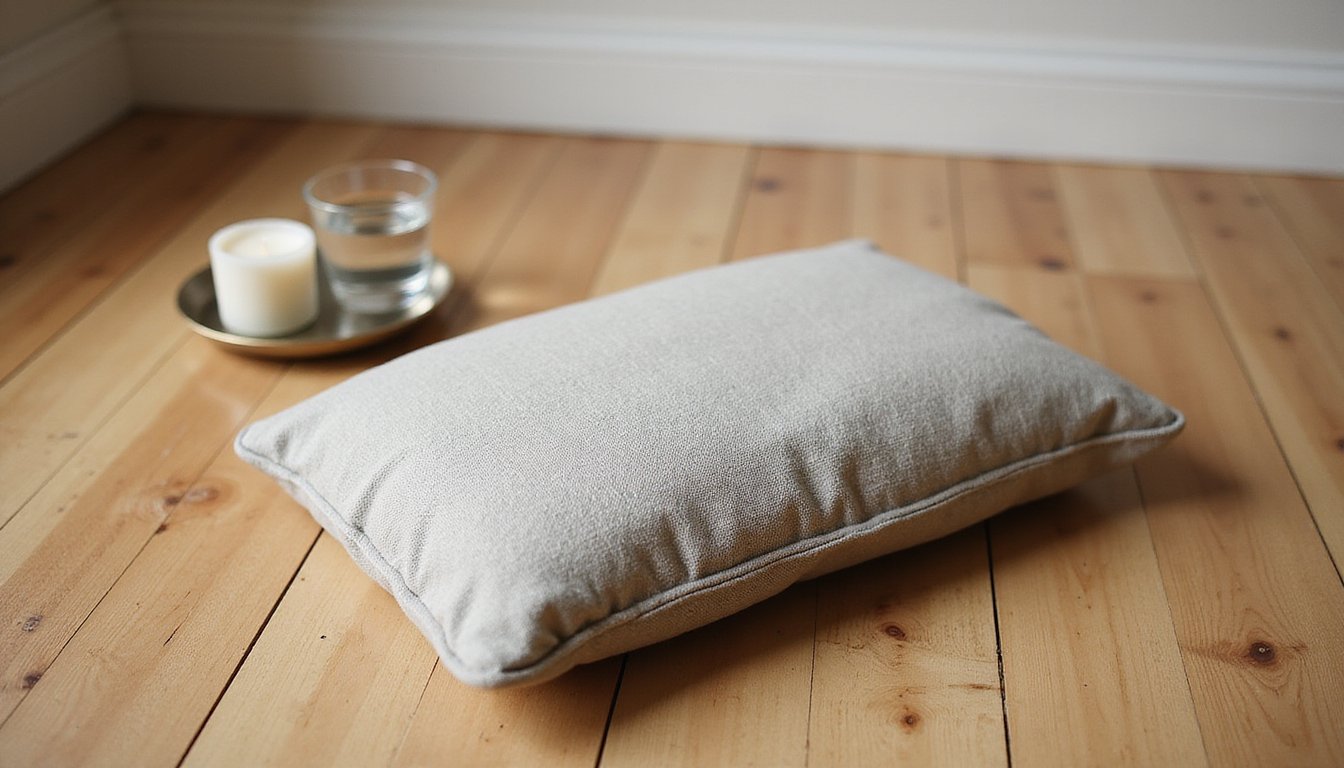Cognitive behavioral therapy (CBT) serves as your primary, evidence-based treatment for anxiety disorders, with success rates exceeding 60%. You’ll work with a therapist to identify and challenge distorted thought patterns while developing practical coping strategies. CBT’s effectiveness stems from its three-pronged approach: cognitive restructuring, exposure techniques, and skills training. Research shows you’ll maintain these benefits for up to 7 years post-treatment, with remarkably low relapse rates of 0-14%. Understanding CBT’s core mechanisms can transform your approach to anxiety management.
Understanding CBT’s Core Principles in Anxiety Management

Cognitive Behavioral Therapy’s core principles form an integrated framework for treating anxiety disorders through systematic modification of thoughts and behaviors.
You’ll work with your therapist to identify and challenge maladaptive thought patterns using evidence-based techniques that target cognitive distortions like catastrophizing and overgeneralization. Through structured sessions, you’ll learn to monitor automatic negative thoughts and develop realistic appraisals of anxiety-triggering situations. The therapy addresses how physical sensations like racing heart and shortness of breath can intensify anxiety symptoms. A key focus is helping patients become their own therapist through educative approaches that build sustainable coping mechanisms. These personalized treatment approaches emphasize replacing distorted thinking with balanced perspectives while building long-term self-management skills. The therapy utilizes behavioral experiments to help you test and challenge anxiety-provoking beliefs in real-world situations.
Your active participation in the therapeutic process is essential, as you’ll collaborate with your therapist to set concrete goals and track progress. Regular practice of new, adaptive thought patterns helps you develop lasting resilience against anxiety, supported by continuous feedback and treatment refinement.
The Science Behind CBT’s Effectiveness
Research demonstrates that CBT yields moderate symptom reductions for anxiety disorders, with meta-analyses showing small to medium effect sizes (Hedges’ g = 0.24) compared to control conditions. You’ll find the treatment benefits remain relatively stable for up to 12 months post-treatment, though recent studies indicate smaller long-term effects at 6-month follow-up (Hedges’ g = 0.09). When compared to psychological placebos, CBT shows superior effectiveness (Hedges’ g = 0.36), suggesting its core mechanisms of cognitive restructuring and behavioral modification actively contribute to symptom relief. A recent quasi-experimental study found that ten CBT sessions significantly reduced anxiety symptoms and worry in women with generalized anxiety disorder. The therapeutic approach is especially relevant given that anxiety-related disorders affect over 301 million people globally. The incorporation of mindfulness-based strategies has further enhanced CBT’s effectiveness by improving patients’ emotional regulation capabilities and reducing anxiety symptoms.
Evidence-Based Treatment Outcomes
While anxiety disorders affect millions worldwide, extensive meta-analyses have consistently validated CBT’s effectiveness as a front-line treatment. Research demonstrates statistically significant reductions in anxiety symptoms, with CBT outperforming placebo controls and alternative therapies. Treatment integrity studies show remission rates exceeding 60% in both youth and adult populations, with improvements maintained during long-term follow-up.
Comprehensive symptom assessments reveal that CBT achieves superior outcomes compared to pharmacological and psychodynamic approaches. You’ll find both group and individual formats yield similar effectiveness, making CBT a versatile treatment option. What’s particularly compelling is the stability of these improvements; patients maintain reduced anxiety and bolstered psychosocial functioning for up to 7 years post-treatment. The evidence supporting CBT’s efficacy is further strengthened by low heterogeneity and minimal publication bias in research findings.
Mechanisms of Symptom Relief
Through multiple evidence-based mechanisms, CBT alleviates anxiety symptoms by systematically targeting cognitive distortions, behavioral patterns, and physiological responses. These personalized intervention strategies work by addressing underlying pathology through coordinated therapeutic actions. Setting clear therapeutic goals with your counselor helps create an actionable treatment roadmap. Taking time to examine evidence that supports anxious thoughts helps clients develop more rational perspectives.
| Mechanism | Therapeutic Effect |
|---|---|
| Cognitive Restructuring | Transforms maladaptive thoughts into realistic interpretations |
| Exposure Techniques | Desensitizes fear responses through gradual habituation |
| Skills Training | Builds adaptive coping strategies and behavioral competence |
You’ll experience relief as CBT rewires your threat assessment system through systematic exposure while building more flexible belief systems. The therapy’s effectiveness stems from its extensive approach: challenging distorted thinking patterns, conducting behavioral experiments, and developing practical coping skills that generalize across different anxiety-provoking situations. The practice of deep breathing exercises helps initiate the body’s natural relaxation response to counteract anxiety symptoms.
Long-Term Success Rates
Extensive meta-analyses demonstrate CBT’s substantial long-term effectiveness across multiple anxiety disorders, with post-treatment remission rates reaching 51% and sustained benefits lasting 12 months or longer. Long-term relapse rates remain remarkably low at 0-14% during follow-up periods, with sustained symptom reduction particularly notable in GAD, social anxiety, and PTSD. When compared to other treatment approaches, combined CBT and pharmacotherapy shows enhanced outcomes for many patients.
- PTSD shows the strongest maintenance of gains with large effect sizes (g=0.84) at 12+ months
- Social anxiety disorder maintains moderate benefits (g=0.42) long-term
- GAD demonstrates smaller but significant lasting effects (g=0.22)
- CBT outperforms control conditions across most anxiety disorders
- Treatment effects gradually decline but remain significant at 10-12 months (g=0.49)
While effectiveness varies by disorder type, CBT consistently proves its value as a durable initial intervention for anxiety treatment.
Key Treatment Components and Techniques
Cognitive Behavioral Therapy (CBT) employs several key treatment components and techniques that work synergistically to address anxiety disorders. At its core, CBT focuses on identifying unhelpful thought patterns and challenging distorted beliefs through cognitive restructuring, helping you develop more balanced perspectives about anxiety-provoking situations. The therapy follows a structured session format that includes regular homework assignments and progress reviews. During therapy, you’ll learn to observe thoughts nonjudgmentally as part of mindfulness training. The therapy can be delivered through in-person sessions, online platforms, or over the phone, depending on your preferences and circumstances.
You’ll engage in exposure therapy, which systematically confronts feared situations through a gradual, structured approach. This is complemented by behavioral activation strategies that encourage participation in rewarding activities while conducting experiments to test anxiety-related predictions. Relaxation and mindfulness techniques, including deep breathing and meditation, help manage physiological symptoms. In addition, you’ll learn practical problem-solving methods to address real-life stressors and implement worry management strategies. These components combine to create an all-encompassing treatment approach that targets anxiety’s cognitive, behavioral, and physiological aspects.
Short-Term vs. Long-Term Treatment Outcomes

While you’ll find CBT highly effective in the short term with significant symptom reductions across anxiety disorders (Hedges g = 0.07-0.85), the long-term outcomes show a more nuanced picture with diminishing effect sizes after 12 months for most conditions. The strongest sustained benefits appear in GAD, SAD, and PTSD treatments, where meaningful improvements persist at one-year follow-up (Hedges g = 0.22-0.84), though effect sizes are especially smaller than immediate post-treatment results. Your likelihood of maintaining therapeutic gains varies by specific anxiety disorder, with reported relapse rates ranging from 0-14% within the first year, chiefly documented in panic disorder cases.
Initial Treatment Success Rates
Research demonstrates that CBT yields substantial initial success rates across diverse anxiety disorders, with meta-analyses of 409 trials (N=52,702) showing moderate to large effect sizes (g=0.79) compared to control conditions. Your baseline symptom severity and social support network greatly influence treatment outcomes, with response rates varying by specific diagnosis. Treatment effectiveness is further enhanced when peer support interventions are incorporated into the therapeutic process. Studies show lower anxiety symptoms persist within 12 months after completing cognitive behavioral therapy.
- Initial remission rates average 51% across anxiety disorders
- Response rates range from 38% for OCD to 82% for body dysmorphic disorder
- CBT achieves 42% response and 36% remission rates, compared to 19% and 15% in control groups
- Number Needed to Treat is 4.7 for response and 3.6 for remission
- Approximately 60% of adults report significant improvement post-therapy completion
These findings demonstrate CBT’s effectiveness as a primary treatment for anxiety disorders, particularly when patients actively engage in the therapeutic process.
Duration of Therapeutic Benefits
Studies examining the duration of CBT’s therapeutic benefits reveal a sturdy pattern of both immediate and sustained anxiety reduction across multiple disorders. You’ll find strong initial effects (g=0.79) that largely maintain their potency for 6-9 months (g=0.74), with remission rates averaging 61.38% post-treatment.
Long-term outcomes show varying degrees of durability. PTSD demonstrates the most powerful maintenance (g=0.84), while GAD and social anxiety show smaller but notable effects at 12+ months (g=0.22 and g=0.42, respectively). Skills maintenance remains relatively stable for up to 12 months, supporting CBT’s role in relapse prevention. However, improvement typically plateaus after one year, with relapse rates ranging from 0-14% within 3-12 months post-treatment. You should note that long-term data remains limited for specific phobias and OCD.
Post-Treatment Symptom Management
Building on our understanding of CBT’s durability, post-treatment symptom management data reveals distinct patterns in both short-term and long-term outcomes. You’ll find persistent symptom reduction across multiple anxiety disorders, with effect sizes ranging from moderate to large immediately after treatment (g=0.88 to g=1.20). Research shows these improvements persist, though they gradually decrease over time.
- Initial remission rates average 51%, increasing to 75% at 6 months
- Panic disorder shows exceptional stability with minimal relapse (0-14%)
- Long-term benefits remain significant up to 2 years post-treatment
- CBT outperforms control conditions in maintaining symptom relief
- Relapse prevention strategies prove most effective when treatment completion rates are high
The evidence suggests CBT’s effectiveness in managing anxiety symptoms extends well beyond the treatment period, particularly when patients fully engage in the therapeutic process.
Comparing CBT to Other Anxiety Therapies

While many therapeutic approaches exist for treating anxiety disorders, Cognitive Behavioral Therapy (CBT) stands out through its powerful evidence base when compared to alternatives. When comparing CBT to relaxation therapy, both show similar effectiveness for specific phobias, but CBT demonstrates superior long-term benefits for generalized anxiety disorder (GAD). Third-wave CBTs, including mindfulness and ACT, match CBT’s short-term effectiveness with comparable dropout rates, though CBT maintains better-documented long-term outcomes.
Research shows CBT consistently outperforms supportive counseling and treatment as usual, particularly in follow-up analyses. For delivery format, internet-based CBT (ICBT) with therapist support achieves results equivalent to face-to-face CBT, though studies typically focus on milder cases. CBT’s structured approach, incorporating cognitive restructuring and exposure techniques, sets it apart from other therapeutic methods.
Patient Success Rates and Recovery Patterns
Research shows you’ll likely experience significant improvements from CBT for anxiety, with remission rates reaching up to 61% post-treatment and remarkably low relapse rates of 0-14% over the following year. You can expect the therapeutic gains to persist meaningfully at 6-12 months after treatment, though the effect sizes gradually decrease from strong (g=0.74) at 6-9 months to moderate (g=0.49) at 10-12 months. Your chances of maintaining recovery appear highest with PTSD, social anxiety, and generalized anxiety disorders, which demonstrate the most enduring treatment effects at the 12-month mark.
Treatment Response Over Time
Understanding how patients respond to Cognitive Behavioral Therapy over time reveals a complex pattern of recovery and remission rates. Research shows significant variability in outcomes, with about half of patients achieving full remission after treatment, while others experience partial symptom remission. Initial improvements show small to medium effect sizes, but the impact can vary by disorder type.
- Short-term results demonstrate immediate improvements with effect sizes ranging from 0.07 to 0.85 across anxiety disorders
- Remission rates average 51% post-treatment, though definitions vary between studies
- PTSD, GAD, and social anxiety show the most sustained gains at 12+ months
- Relapse rates remain relatively low (0-14%) over 3-12 months after successful CBT
- Treatment benefits tend to diminish over time, with 6-month follow-up effects showing smaller impacts
Predictors of Recovery Success
The success of CBT for anxiety treatment depends on multiple interconnected factors that shape patient outcomes. You’re more likely to achieve remission if you’re under the prime of life, have higher education levels, and strong psychosocial support systems. However, comorbid diagnosis impact can greatly reduce recovery chances, especially with concurrent depression or multiple anxiety disorders.
| Factor | Impact on Recovery |
|---|---|
| Age | Under the prime of life shows higher success |
| Duration | Shorter illness predicts better outcomes |
| Treatment Type | Face-to-face slightly outperforms digital |
Your recovery likelihood increases with longer treatment duration and more therapist contact. While individual and group CBT show similar effectiveness, strict adherence to treatment protocols is essential. You’ll typically see remission rates around 51%, though this varies by anxiety subtype, with OCD and PTSD showing particularly strong long-term outcomes.
Accessing CBT: Treatment Formats and Delivery Methods
Modern advances in healthcare delivery have dramatically expanded the ways people can access Cognitive Behavioral Therapy (CBT) for anxiety treatment. Today’s telehealth delivery models and flexible treatment schedules accommodate diverse patient needs through multiple formats.
CBT for anxiety is now more accessible than ever, with modern healthcare offering flexible options to match individual patient circumstances.
- Traditional in-person CBT provides weekly 50-60 minute sessions with personalized attention and structured interventions
- Group settings offer cost-effective treatment while fostering peer support and shared learning experiences
- Online and telehealth platforms enable convenient access through video sessions and digital modules
- Self-help and guided options suit motivated individuals with mild anxiety, featuring minimal therapist oversight
- Blended approaches combine face-to-face sessions with digital tools, allowing for stepped care based on severity
Research supports the efficacy of these diverse formats, with online CBT showing comparable outcomes to in-person treatment for many patients.
Current Research Findings and Clinical Evidence
While diverse treatment formats have expanded CBT’s reach, extensive research validates its effectiveness as a gold-standard intervention for anxiety disorders. Meta-analyses across 375 trials demonstrate medium to large effect sizes, with a pooled Hedges’ g of 0.51 for controlled studies and 1.18 for uncontrolled pre-post outcomes. During treatment implementation, you’ll find that CBT’s structured protocols typically span 12-16 weeks, employing evidence-based techniques like exposure exercises and cognitive restructuring.
From patient perspectives, clinical outcomes show significant symptom reduction and improved daily functioning, though challenges remain. Research indicates 9-50% of patients experience nonresponse or early dropout. Despite these limitations, CBT’s effectiveness has remained stable over three decades, consistently delivering positive outcomes that reduce anxiety’s societal burden and bolster quality of life.
Measuring Progress and Treatment Goals
Measuring therapeutic progress effectively requires implementing systematic assessment protocols that combine standardized scales with behavioral tracking methods. You’ll find that evidence-based CBT incorporates measurement-based care to guarantee both client satisfaction and therapist competency, while enabling data-driven treatment adjustments.
Key elements of progress measurement in CBT include:
- Weekly administration of validated anxiety scales like GAD-7 and PHQ-9
- Regular tracking of behavioral changes through systematic monitoring
- Implementation of SMART goals that align with functional improvements
- Visual representation of progress through session-by-session graphing
- Collaborative goal-setting that emphasizes measurable outcomes
This structured approach to progress monitoring allows you to objectively assess symptom reduction while maintaining therapeutic alliance. Research shows that consistent measurement bolsters treatment outcomes by facilitating timely interventions and maintaining accountability throughout the therapeutic process.
The Future of CBT in Mental Healthcare
Transformative advances in technology and healthcare delivery are rapidly reshaping the domain of Cognitive Behavioral Therapy (CBT). You’ll see emerging CBT innovations through AI-powered platforms, virtual therapists, and wearable technology that provide 24/7 support and personalized treatment options. These digital solutions are breaking down traditional barriers to access, especially in underserved areas.
Despite promising developments, digital integration challenges persist. The growing shortage of certified therapists and increasing demand for specialized care create implementation hurdles. However, the CBT market’s projected growth to $21.62B by 2032 signals substantial expansion, particularly in Asia Pacific regions. You can expect to see continued evolution in CBT delivery through enhanced digital platforms, improved predictive analytics, and stronger integration with primary healthcare systems to meet the rising global demand for mental health support.
Frequently Asked Questions
How Much Does CBT Typically Cost per Session for Anxiety Treatment?
You’ll typically pay between $100-$200 per CBT session for anxiety treatment in the U.S. If you’re looking for more affordable options, sliding scale options can lessen costs to $50 per session based on your income. Group therapy sessions offer a lower-cost alternative at $30-$60 per visit. Insurance coverage can substantially decrease your out-of-pocket expenses to $20-$50 copays, while telehealth sessions generally range from $80-$150.
Can Children and Teenagers Effectively Participate in CBT for Anxiety?
Yes, children and teenagers can effectively participate in CBT for anxiety. Research shows significant success rates, with remission reaching nearly 50% compared to 18% without treatment. You’ll find that therapists use developmentally appropriate techniques like interactive activities and stage-of-life-specific language to keep young people engaged. Whether delivered individually, in groups, or through computer-based formats, CBT’s engaging modalities for youth consistently demonstrate moderate to large positive effects on anxiety symptoms.
What Qualifications Should I Look for When Choosing a CBT Therapist?
You should seek a therapist with extensive clinical experience and specialized CBT training, preferably holding a master’s or doctorate degree in psychology or related fields. Look for state licensure and CBT-specific certifications from recognized organizations like the Beck Institute or NACBT. Check their credentials, years of experience treating anxiety, and whether they’ve completed supervised clinical hours. Don’t hesitate to ask about their ongoing education and experience with your specific type of anxiety.
Does Insurance Typically Cover CBT Sessions for Anxiety Disorders?
Yes, most insurance policies cover CBT sessions for anxiety disorders, especially since mental health parity laws require comparable coverage to physical health treatments. You’ll likely need a formal anxiety diagnosis and pre-authorization. However, coverage limitations may include session caps, network restrictions, and required medical necessity documentation. While co-pays typically range from $20-$50 per session with insurance, you should verify your specific plan’s requirements and limitations before starting treatment.
How Can Family Members Support Someone Going Through CBT Treatment?
You can best support your loved one’s CBT expedition by encouraging open communication and fostering understanding about their anxiety. Participate actively in therapy sessions when invited, help them practice CBT skills at home, and avoid enabling avoidance behaviors. It’s pivotal to validate their feelings while maintaining consistent responses to anxiety-driven situations. You’ll also want to learn proper communication techniques that reduce symptom escalation and support their progress in the direction of independence.





